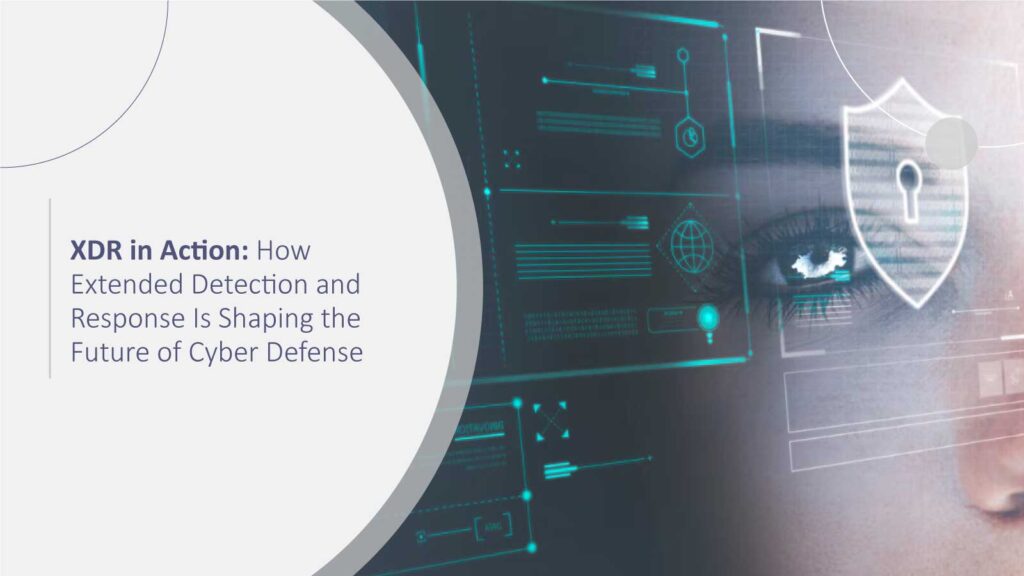With the fast pace of the cyber threat environment today, conventional security solutions struggle to offer end-to-end protection. Extended Detection and Response (XDR) has so far proven to be a game-changer by providing an integrated solution for threat detection, investigation, and response. Through consolidating evidence from various layers of security. Endpoints, networks, servers, and cloud infrastructure. XDR helps organizations recognize and guard themselves against threats more effectively. This article discusses how XDR operates and how it has transformed enterprise security.
Knowing Extended Detection and Response (XDR) and How It Works
Extended Detection and Response (XDR) is an emerging cybersecurity technology. XDR connects or aggregates various security products and data sources into a single pane of glass console. It can be is part of the overall security program. Furthermore, XDR allows contextual detection and response over the entire IT ecosystem. Not just endpoints, as is the case with Endpoint Detection and Response (EDR). XDR works as a suite or platform of tools. It effectively collects and collates telemetry from endpoints, networks, end-users, servers, and cloud workloads into a single interface. This enables security professionals to gain a unique organization-wide view of security posture.
The use of artificial intelligence (AI) and machine learning (ML) technologies in an XDR system is one of the key features. These enable security teams to effectively manage enormous volumes of information in real-time. Also, these approaches facilitate unbiased detection of anomalies. Further, the creation of a summary overview of potential threats, and then the possible prioritization of incidents based on severity. When a user’s access to a sensitive document is from an anomalous location, for example, XDR can flag that access and invoke a predetermined action. For example, notifying someone in the security operations center or stopping the execution of the infected device.
This is revolutionary because XDR decreases the mean time to detect (MTTD) and mean time to respond (MTTR) to security incidents. IBM’s most current report indicates that organizations with automated response capabilities have incident times 27% shorter when an incident happens.
Strategic Advantage of Adopting XDR
There are a lot of strategic benefits to adopting XDR that add layers of value to any organization’s cybersecurity strategy:
Holistic Visibility: By offering a single pane of glass to monitor all security occurrences across layers, XDR enables security professionals to more accurately identify and address risks.
Reducing Alert Fatigue: By automatically correlating data and eliminating false positives prior to informing analysts, XDR enables an organization to better manage the volume of alerts and finally only worry about real dangers when they become apparent.
Enhanced Incident Response: XDR’s automated capabilities enable response teams to act on threats much quickly and reduce the impact of implications in security incidents.
Simplified Operations: XDR simplifies cybersecurity by consolidating point tools onto a unified platform, reducing the complexity of the workflow.
A good illustration would be the case of a company that provides financial services. This employed XDR to consolidate its endpoint security, network monitoring, and also cloud security solutions. It helped the organization uncover some advanced phishing attacks that attackers were launching against its own employees.
The XDR solution was able to link data between the endpoint layer, email layer, and network layer to identify a malicious activity that the end user was committing. The XDR then established an automation to prevent the user from exfiltrating data.
Best Practices for Extended Detection and Response Implementation
Organizations can realize maximum value from XDR by following these best practices:
1. Interoperability: Organizations must make sure that they select XDRs that can combine with whatever security solution(s) they have implemented. If you currently have or implement a firewall, SIEM, or threat intelligence platform, the XDR needs to work and eventually play nicely with it.
2. Continuous monitoring & tuning: Like all other security devices, an XDR should be carefully monitored, as well as regularly tuned when appropriate, which can be based on new threats, changes within the organization, and performance tuning.
3. Employee training: Security staff must have the requisite abilities and knowledge to properly use and operate an XDR.
4. Cooperation effort: There should be cooperation among IT teams, security teams, and possibly other organizations such that organizations are addressing cybersecurity from a collective endeavor.
Organizations that apply the above best practices will gain the full benefit of their XDR implementations in strengthening their overall cybersecurity stance.
Conclusion
Because it provides a unified approach to threat detection, investigation, and response, Extended Detection and Response (XDR) is a noteworthy advance in enterprise security. The main selling point of XDR is its capacity to correlate data from various security levels with an AI/ML layer, allowing enterprises to identify and address risks more thoroughly. Increasing your detection, focus, and also monitoring skills to XDR results in a more proactive, robust cybersecurity solution and increased attention to detail in security operations.
FAQs
1. What is the main distinction between Extended Detection and Response (XDR) and standard Endpoint Detection and Response (EDR)?
While EDR has an endpoint-centricity, XDR encompasses the whole IT infrastructure, including endpoint, network, server, and cloud data and telemetry.
2. How does XDR enhance threat detection?
XDR bridges AI and ML to process data from different feeds to detect behavioral anomalies and attacks faster and better.
3. Can XDR be stacked atop current security solutions?
Yes, XDR solutions are designed to be stacked atop and also integrated into your current security controls in your security stack, with one location for threat detection.
4. Are SMEs well-suited for Extended Detection and Response?
Yes. XDR allows SMEs to experience sophisticated threat detection and response at a low capital outlay.
5. What are the overall benefits of implementing XDR?
The major benefits of XDR are visibility across threats, lower alert fatigue, enhanced Incident Response, and enhanced operational efficiency.
To participate in upcoming interviews, please reach out to our CyberTech Media Room at sudipto@intentamplify.com.







